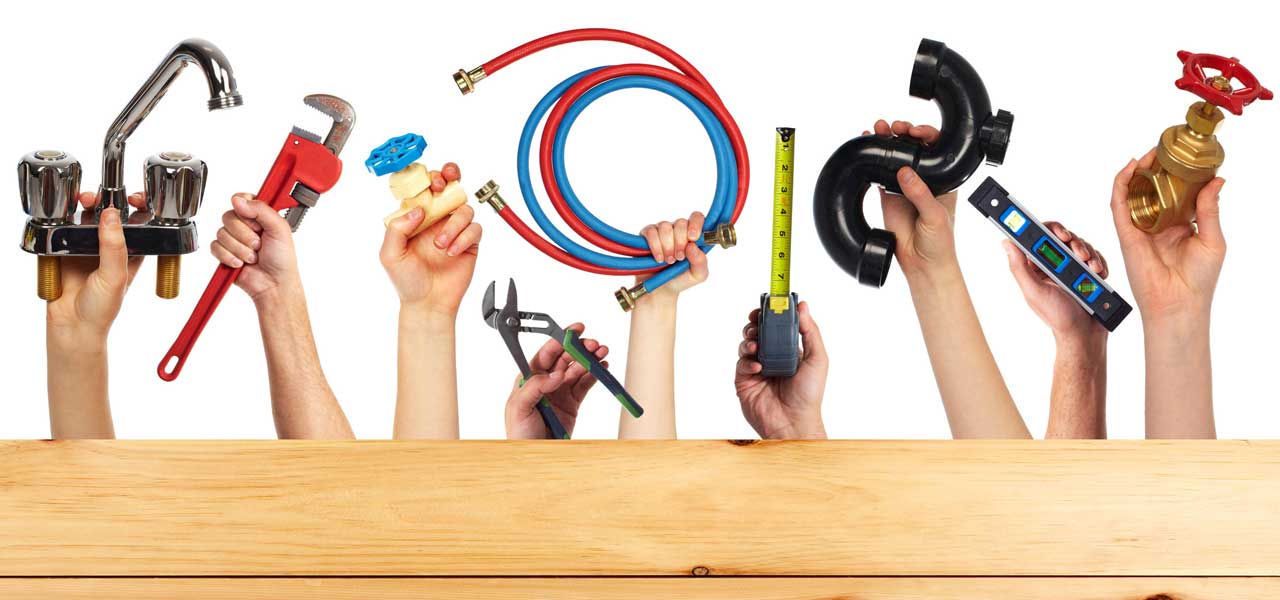Getting Acquainted with Home Plumbing Basics: A Beginner's Handbook
Getting Acquainted with Home Plumbing Basics: A Beginner's Handbook
Blog Article
What are your insights and beliefs on How Does the Plumbing Work in Your Home??

Plumbing is a necessary element of any kind of home, in charge of providing clean water for drinking, cooking, and bathing, as well as eliminating wastewater securely. Comprehending the basics of home plumbing is vital for every homeowner to make certain proper maintenance, troubleshooting, and, if needed, repairs. In this newbie's overview, we'll cover the essential concepts of home plumbing to assist you come to be more knowledgeable about exactly how it functions.
Water Heater
The water heating unit is responsible for home heating water for residential usage, including bathing, food preparation, and cleansing. Common sorts of hot water heater include tank-type hot water heater, tankless (on-demand) water heaters, and heat pump hot water heater. The hot water heater is attached to the supply of water system and delivers warm water to plumbing components as required.
Water drainage System
The drain system gets rid of wastewater from your home and brings it away to a sewage treatment center or septic system. It includes a network of pipelines, fittings, and components that deliver wastewater from plumbing components to the major sewage system line or septic tank. Proper drain is vital to avoid clogs, back-ups, and sewage leakages.
Air flow System
The air flow system helps maintain appropriate atmospheric pressure and stop sewage system gases from entering your home. Air vent pipelines, also referred to as vent heaps, extend from plumbing fixtures to the roof covering, permitting drain gases to leave safely outdoors. Ventilation pipelines likewise allow air to enter the water drainage system, assisting in smooth wastewater flow and protecting against suction or vacuum results.
Water Supply System
The supply of water system brings tidy water right into your home from a local water source or an exclusive well. It consists of a main water line that attaches to your home's plumbing system, usually located underground. A water meter measures the quantity of water consumed, while a shut-off shutoff allows you to regulate the circulation of water right into your home.
Plumbing Fixtures
Plumbing fixtures are devices that provide water to different parts of your home and consist of sinks, taps, bathrooms, showers, tubs, and devices such as dish washers and washing devices. Each component is linked to the supply of water system through pipes and fittings and might have its shut-off valve for maintenance or emergency situations.
Usual Plumbing Devices
Having the right tools handy is crucial for performing fundamental plumbing repairs and maintenance jobs. Typical plumbing tools include adjustable wrenches, monkey wrench, pliers, pipeline cutters, hacksaws, bettors, augers (or drainpipe snakes), and Teflon tape. Having these devices readily available can help you tackle minor plumbing concerns effectively.
Basic Plumbing Repair Work
While some plumbing repair services may need expert support, numerous typical concerns can be resolved with standard do it yourself strategies. Learning exactly how to fix a dripping tap, unblock a drain, replace a toilet flapper, or repair a trickling showerhead can conserve you time and money on plumbing repairs.
Conclusion
Recognizing the basics of home plumbing is important for each property owner to maintain a safe, practical, and reliable plumbing system. By familiarizing yourself with the water system, plumbing fixtures, drainage system, ventilation system, common plumbing tools, and basic repair work, you can confidently address small plumbing issues and guarantee your home's plumbing system operates efficiently.
Understanding Basics of Home Plumbing System: A Beginner's Guide
The Main Components of Your Home Plumbing System
The Water Supply System
This system is responsible for transporting fresh water into your home. It usually has a main water line that splits into two branches: one directed towards cold water services and the other connected to a water heater for hot water. The pressure is key here; it ensures water reaches all parts of your house.
The Drainage System
Once water has been used, it becomes wastewater that needs to be removed from your home. This is where the drainage system comes into play. It includes all the pipes that carry wastewater and sewage away from your house to sewage treatment facilities or septic tanks.
The Vent System
The vent system prevents sewer gases from entering your home and helps maintain the pressure balance that allows wastewater to flow out properly. These vents usually exit through the roof of your house.
Water Heating System
For those who enjoy hot showers or using hot water for cleaning, the water heater is a crucial part of the plumbing system. It can be a tankless system, which heats water on demand, or a traditional water tank model.
Common Plumbing Problems and Basic Troubleshooting
Plumbing systems, while designed to be durable, can face issues like clogged drains, leaky faucets, or low water pressure. Here are some basic troubleshooting tips:
Clogged Drains
Use a plunger or a plumber's snake to try and dislodge whatever is blocking the drain. Regular cleaning can prevent clogs.
Leaky Faucets
Often caused by worn-out washers or gaskets, these can usually be replaced by someone with basic DIY skills.
Low Water Pressure
This might be due to sediment build-up in your fixtures or a leak somewhere in your water line. Cleaning out aerators or seeking a professional to detect leaks might be necessary.
Preventive Maintenance Tips
Maintaining your plumbing system is key to avoiding emergencies. Regularly check for leaks, avoid disposing of grease down the sink, and have your system inspected by a professional plumber at least once a year.

Hopefully you enjoyed our piece on What to Know About Plumbing: Basics, Tips, and Insights. Thanks a lot for spending some time to read our posting. Those who enjoyed reading our page kindly do not forget to pass it around. I truly appreciate your readership.
Book Report this page